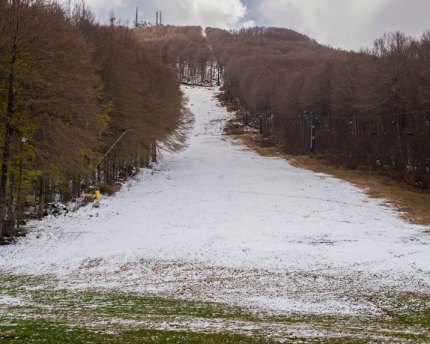Winter enthusiasts take on climate change

Climate change is impacting winter sports.
Stock photo.
It’s undeniable that climate change is threatening the winter sports and tourism industries. Colder regions around the world are experiencing a steady decline in snowfall and snowy months. In the classic tale of Frosty the Snowman, Frosty promises to come back next winter when the cold returns. But as global average temperatures continue to climb, will Frosty keep coming back?
The SNOTEL network has kept detailed records of snow at high elevations since the 1960s. Based on its data, scientists have determined a 10 percent to 20 percent average loss in the annual maximum snow water equivalent (the amount of water stored in snow packs) during that time because of global warming. They have also recorded a one-to-two-week loss in days with snow cover in those regions since the 1970s.
“Warmer winter temperatures also affect the characteristics of accumulated snow on the ground, including snow depth, how long the snow stays on the ground, and snow ‘slushiness,’” reports the group Protecting Our Winters in a report produced in conjunction with gear retailer Recreational Equipment Inc., known as REI. Of course, more slushiness and less powder are not ideal for winter sports enthusiasts.
Whether it’s skiing, snowboarding or just rolling around in the snow, there are many activities that rely on the cold. One study found that 20 million Americans participate in winter sports annually, generating $20.3 billion in the winter sports tourism industry. This industry supports over 191,000 jobs.
So, what’s the industry doing to address these changes? The National Ski Areas Association has taken on global warming via its Climate Challenge program, which promotes education around global climate change, creating more sustainable slopes, and furthering outdoor business climate partnerships.
Winter sports athletes have also been advocating for climate action. Before the 2014 Winter Olympics, 75 decorated Olympic skiing and snowboarding medalists wrote to President Barack Obama calling for more ambitious action on climate change; they continue to advocate for climate action. Additionally, “sustainability” was recently announced as one of the three pillars of Olympic Agenda 2020.
Last but not least, Protect Our Winters has been a huge player in pushing for climate action. “We find things in deep winter or at high altitude elevations that we don’t find anywhere else, that speak very directly to our connection to nature and to the human soul,” the group's executive director, Mario Molina, tells Yale Climate Connections. Protect Our Winters rallies athletes, scientists, business leaders and others to advocate for policies that protect climate and offers resources for advocacy, education, donating and volunteering.
This column was reprinted with permission. EarthTalk is produced by Roddy Scheer and Doug Moss and is a registered trademark of the nonprofit Earth Action Network. To donate, visit www.earthtalk.org. Send questions to: question@earthtalk.org.

